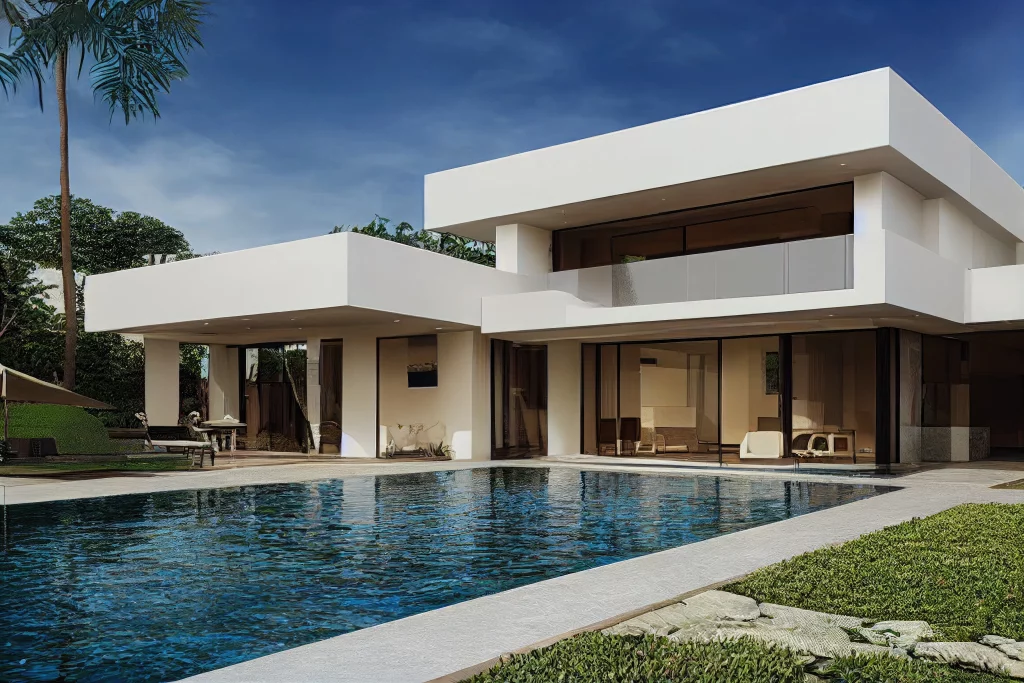In the world of architecture, modern buildings have emerged as iconic symbols of modern design and functionality. These structures, characterized by their sleek lines and innovative use of materials, are reshaping skylines and redefining our urban landscapes. In this blog post, we will explore the unique features of contemporary concrete buildings, their design principles, and the reasons behind their popularity.
The Aesthetics of Contemporary Concrete
One of the defining features of contemporary concrete buildings is their aesthetic appeal. Architects leverage the versatility of concrete to create structures that blend seamlessly with their surroundings while making a bold statement. Smooth surfaces, clean lines, and minimalist designs are common characteristics that contribute to the elegance of these buildings.
The Versatility of Concrete
Concrete, a fundamental building material, has been reimagined in contemporary architecture. Unlike the drab and utilitarian concrete structures of the past, today’s architects use concrete in innovative ways. Its versatility allows for the creation of intricate facades, striking geometric shapes, and even flowing curves that defy traditional expectations.
Sustainable Design
Another key aspect of contemporary concrete buildings is their commitment to sustainability. Architects are increasingly incorporating eco-friendly practices into their designs, and concrete, with its durability and thermal mass properties, is an ideal material for sustainable construction. This not only How Cement Companies Are Reducing Their Environmental Impact but also enhances the energy efficiency of the buildings.
Innovative Structural Design
Contemporary concrete buildings often push the boundaries of structural design. Engineers and architects collaborate to create structures that seem to defy gravity. Cantilevered sections, soaring heights, and open, column-free spaces are achieved through advanced engineering techniques. This innovation not only adds to the visual appeal but also improves the functionality of the spaces within.
Integration of Technology
Technology plays a crucial role in the design and construction of contemporary concrete buildings. Advanced modeling and simulation tools enable architects to visualize and optimize their designs before construction begins. Additionally, smart building technologies are integrated to enhance energy efficiency, security, and overall comfort within these structures.
Cultural and Social Context
Contemporary concrete buildings are not just architectural marvels; they also reflect the cultural and social contexts in which they are situated. Architects draw inspiration from local traditions, history, and the needs of the community to create buildings that resonate with the people they serve. This approach fosters a sense of connection and belonging, making these structures more than just physical spaces.
Iconic Examples
Several iconic examples of contemporary concrete buildings have captured the world’s attention. The Burj Khalifa in Dubai, with its record-breaking height and sleek design, stands as a testament to human ingenuity. The Tadao Ando-designed Church of the Light in Osaka, Japan, showcases the spiritual and aesthetic potential of concrete. These buildings not only inspire awe but also demonstrate the diverse applications of concrete in modern architecture.
Challenges and Criticisms
While contemporary concrete buildings have earned acclaim for their aesthetics and functionality, they are not without their challenges and criticisms. Some argue that the production of concrete contributes significantly to carbon emissions, raising environmental concerns. Additionally, the perception of concrete as a cold and uninviting material persists in some circles.
Contemporary concrete buildings are at the forefront of modern architecture, showcasing innovation, sustainability, and a deep connection to cultural and social contexts. These structures have redefined the possibilities of concrete, transforming it from a basic building material into a medium for artistic expression and sustainable design. As technology continues to advance and architects push the boundaries of creativity, we can expect even more awe-inspiring concrete structures to shape our cities and captivate our imaginations.



